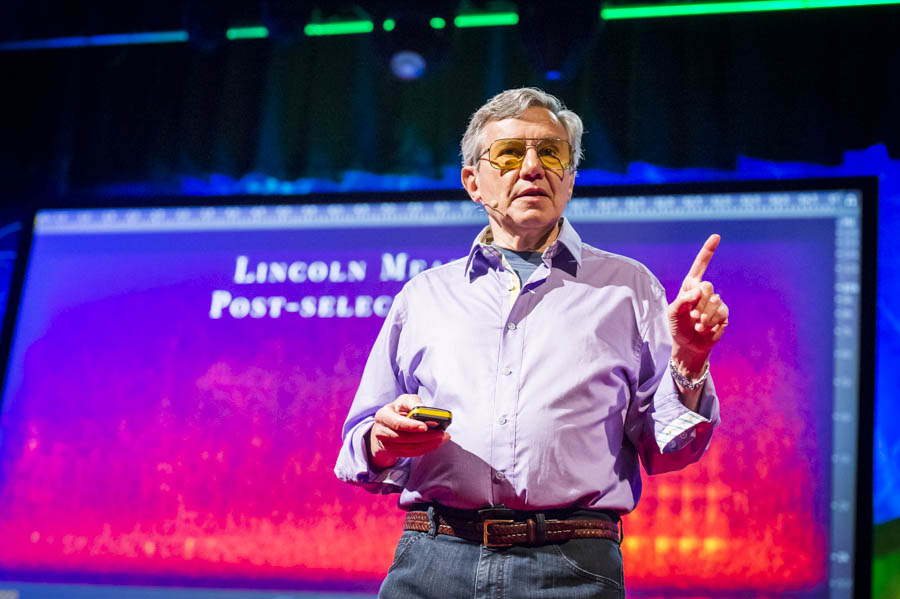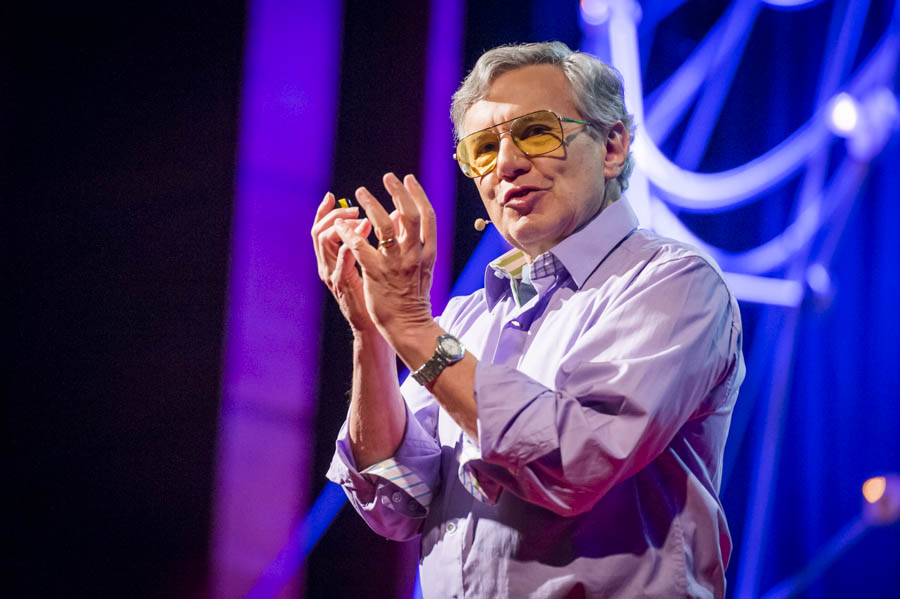Bernie Krause is here to talk about soundscapes, the unique sound signatures he says are the foundation of every habitat, if only you know what you’re listening for. He certainly knows; the sound engineer has been recording in the wild for the past 45 years. “There was a time when I considered natural soundscapes to be a worthless artifact,” he acknowledges. “Well, I was wrong. What I learned from these encounters was that careful listening gives us incredibly useful tools by which to evaluate the health of a habitat across the entire spectrum of life.”
First, some basics. A soundscape essentially consists of three sources: the “geophony,” or the non-biological sounds of any habitat, such as the wind in the trees and the waves on the beach; the “biophony,” or the collective sound organisms make in their collective wild habit; and the “anthrophony,” which is the sound humans make.
Nowadays, soundscape ecologists examine all three sources together. After all, “you wouldn’t try to understand the magnificence of Beethoven’s Fifth Symphony by abstracting the sound of a single violin player out of the context of the orchestra and hearing just that one part.” So why would we try to understand only one line of nature’s musical notation system?
Not all of the changes he has observed over the years have been positive. “When I began recording over four decades ago, I could record for ten hours and capture one hour of usable material good enough for an album, a film soundtrack or museum installation,” says Krause, a quiet but dignified figure on the TEDGlobal stage. “Now, because of global warming, resource extraction and human noise, among other factors, it can take up to 1,000 hours or more to capture the same thing.” Some of the locations he has recorded over the years have slowly fallen silent. It’s a sobering thought; the audience, appropriately, is entirely silent, spellbound.
Krause has some examples of soundscapes to play us. He shows a graphic spectogram of a soundscape recorded in Lincoln Meadow in the Sierra Nevada mountains. In 1988, a logging company had convinced local residents there would be no environmental impact whatsoever from the new method of “selective logging.” Krause recorded the meadow before the loggers went in (note the dawn chorus of the birds):
[soundcloud url=”http://api.soundcloud.com/tracks/96106833″ params=”” width=” 100%” height=”166″ iframe=”true” /]
A year later, he returned to record once more. By now, the birds have all but gone, minus one resilient woodpecker who shows up halfway through:
[soundcloud url=”http://api.soundcloud.com/tracks/96106920″ params=”” width=” 100%” height=”166″ iframe=”true” /]
Krause has returned to Lincoln Meadow 15 times in the past 25 years. “The density and diversity of that biophony has not yet returned to anything like it was before the operation.” He shows us a photograph of the meadow, pointing out that it looks like there is no obvious change. “Hardly a stick or tree is out of place, which would confirm the logging company’s contention that there was no environmental impact. However, our ears tell us a very different story.”
He has other snippets to play us, including a fabulous clip of a sea anemone swallowing — and spitting out — his underwater microphone. Turns out, belching is funny in any language. There’s a toad chorus of Great Basin Spadefoot Toads living just east of Yosemite Park, recorded before and after being buzzed by jet pilots. Then there’s the heartbreaking sound of a beaver, mourning the murder of its partner and child by two humans. One of Krause’s colleagues witnessed this random act of violence and, horrified, stayed around to record what happened next. It’s heartbreaking. Krause plays the sound of “the lone surviving male beaver swimming in slow circles, crying out inconsolably for its lost mate and offspring. This is probably the saddest sound I’ve ever heard coming from any organism, human or other.” Sniff.
“While a picture may be worth 10,00 words, a soundscape is worth 1,000 pictures,” Krause concludes. “Our ears tell us the whisper of every leaf and creature and speak to the natural sources of our lives, which indeed may hold the secrets of love for all things, especially our own humanity.” The last word goes to the sound of a jaguar, recorded in the Amazon, while Krause stands framed in shadow on the stage. A dramatic end to a poignant, thought-provoking talk that receives prolonged applause.


Comments (4)
Pingback: Dutch zoo helps rare spadefoot toads | Dear Kitty. Some blog
Pingback: A Conversation With Bernie Krause | Sonic Terrain
Pingback: The dramatic change in soundscapes due to human activity | Acoustically Delicious